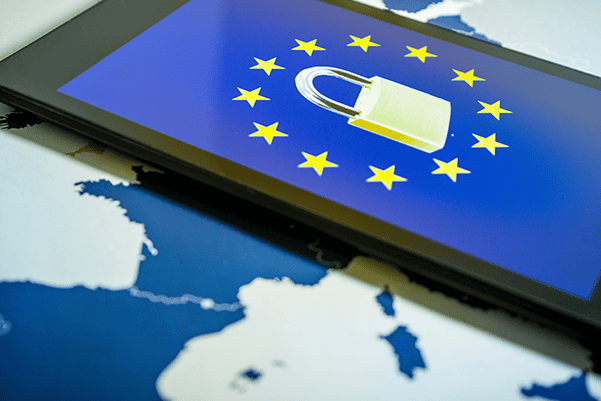
2021: A Year of Digital Transformation, Data Management, Recoverware, and Containers
Given everything that has unfolded this past year, predicting what’s next carries a lot of uncertainty. It’s clear that the pandemic and its impact on our workplaces accelerated the adoption of technologies and digital transformation in ways we couldn’t have predicted a year ago.
However, we can’t stop looking ahead. With that in mind, members of our leadership team share what’s likely to impact us and our industry most in 2021.
The Digital Transformation Is Far from Over
Ziv Kedem, CEO: The digital transformation revolution will continue in full force into 2021 and the future. It is an ongoing, multi-year trend that is solidly underway but far from over. The year 2020 showed us many things, and one particularly stands out. When an organization’s physical footprint is removed, IT systems become the tissue that connects the organization. Businesses will succeed or fail based on their digital capabilities. Those who successfully transform will see positive impacts on efficiency, stability, and prosperity.
We can use this moment as a learning experience. Last year shook the market, and shaking up the market is a good thing. The new remote requirements and heightened security issues have pushed enterprises away from legacy technologies. Customers are being forced to rethink how things should be done, and this opens the door for innovation.
In our industry, that innovation relates to the future of backup—continuous data protection (CDP). We all learned in 2020 that modern organizations must be on 24/7/365 to operate efficiently and meet consumer demand. Downtime and data loss can cost a company millions of dollars and damage its reputation.
For companies undertaking their own digital transformation, protecting their data is a major consideration. Traditional periodic backup does not provide them with the protection required by the modern digital world. During recovery, up to 24 hours of data can be lost, and today’s organizations can’t afford to lose that productivity, data, and revenue. They need CDP that allows them to maintain the same level of performance in any circumstance.
In 2021 and beyond, experiencing data loss will be non-negotiable: It just can’t happen. Successful organizations will move away from the periodic, point-in-time copies of traditional backup and modernize with the always-on replication and granular recovery being pioneered by CDP solutions. It is the only way to move backup forward and avoid data loss.
The Rise of Recoverware
Avi Raichel, CIO: This past year found nearly everyone working from home at some point. Some loved it and some didn’t, but it’s unlikely we’ll ever go back to how business was done before.
What’s more, digital transformation is no longer an option but an absolute necessity, making the stakes higher than just 12 months ago. Not only are the risks more widespread, but there are more opportunities for cyber criminals to succeed. This means that IT disruption caused by the threat of ransomware should be a concern for every CIO and every company. The harsh reality, however, is that no matter how much an organization invests in protection, eventually, something will get in. The ultimate protection isn’t a wall around the perimeter; it’s the ability to recover quickly and get back to business as usual.
As a result, 2021 will be the year of recoverware, since the ability to recover is just as critical as protection walls. Companies need to invest in recovery solutions that are fast and affordable, recognizing that this will save money in the long run—as opposed to paying a ransom at a moment’s notice. After all, ransomware doesn’t work if the target doesn’t have to pay.
Every organization must realize that eventually, an attack happens to everyone. The choice is to decide ahead of time how to deal with it, and it’s smarter to prepare with recoverware than to pay a ransom.
Data Management Will Become Mission Critical
Gijsbert Janssen van Doorn, Director of Technical Marketing: There is plenty of uncertainty ahead, but one thing businesses can rely on is the need to not only retain their newfound mobility but build on it. This effort will center on data; in the rapid move to the cloud, many organizations have struggled to properly manage their data. And some have already paid a price for this, whether in the form of limited analytical abilities or worse, a full-blown data breach.
While many organizations already have access to cloud backup or data recovery, in 2021 they need to also implement a uniform management layer that offers visibility into data location and storage, which will significantly aid their ability to protect workloads in the long term.
This will form part of a much wider investment in digital transformation and automation, all focused on increasing process efficiency. Once data is under control, protected, and monitored appropriately, organizations can better leverage artificial intelligence and machine learning to optimize these automated processes.
Many businesses were altered in 2020. As the dust settles in 2021 and organizations across all sectors work through the economic ramifications, those who can make the most of the data they have available will see far more value from their digital transformation efforts.
Cloud Dominance Will Prevail
Andy Fernandez, Product Marketing Manager: Now that we’ve moved past the hype of the cloud, it has become a catalyst of digital transformation. COVID-19 stress-tested our infrastructure globally, and it showed that the cloud can actually scale and support the surge in provisioning, which confirmed it as a reliable source of infrastructure. This was made possible not only because of how readily available the cloud is, but also because it allows people to scale quickly, spin up new resources, and accelerate application development.
In 2021, modern organizations will move even more workloads to the cloud and continue to adopt cloud-native services—specifically, containers and applications for DevOps. By the end of the decade, enterprises will run most of their production environments in the cloud. Companies will move away from building new sites or buying more hardware in favor of pursuing an operational model with the cloud. To achieve this, organizations will need data management, protection, and mobility solutions that facilitate the move instead of being an impediment.
The Year of Containers
Deepak Verma, Director of Product Strategy: In 2020, IT organizations began adopting containers at a rate we hadn’t seen before. However, this adoption is just the first step. What we’ll see in the next 12 months is a noticeable acceleration of how containers are being put into production. This is happening quickly, especially when considering that just a year ago many large enterprises weren’t doing anything with containers or merely had a small stealth DevOps team. Undoubtedly, this shift will generate new data that needs the governance, backup and data protection, and full disaster recovery capabilities of VM-based applications.
Ultimately, it will become clear in 2021 that containers are the fundamental technology that enables true hybrid multi-cloud deployments. This will drive more architectures that look at both the containers and their data as a single entity. In 2021, organizations will realize that containers and public cloud remove and hide most of the infrastructure-layer complexity, freeing organizations to focus on bringing applications to market quicker.
To 2021—and Beyond
In many ways, innovation in the technology industry has been a much-needed positive change over the past several months. As we move forward, smart business leaders will build on what they’ve learned in 2020 with a renewed sense of what’s possible and confidence in how transformative adopting innovative technology can be. No matter your challenge in 2021, Zerto is here to help you meet your data protection and recovery needs.
 Caroline Seymour
Caroline Seymour 
